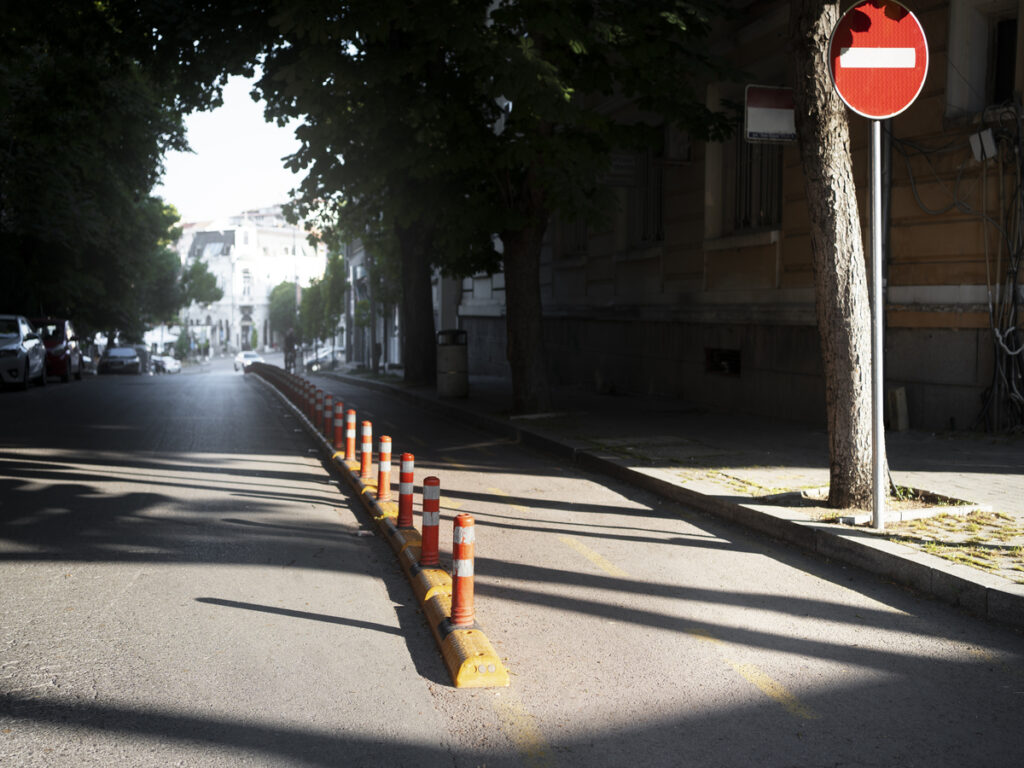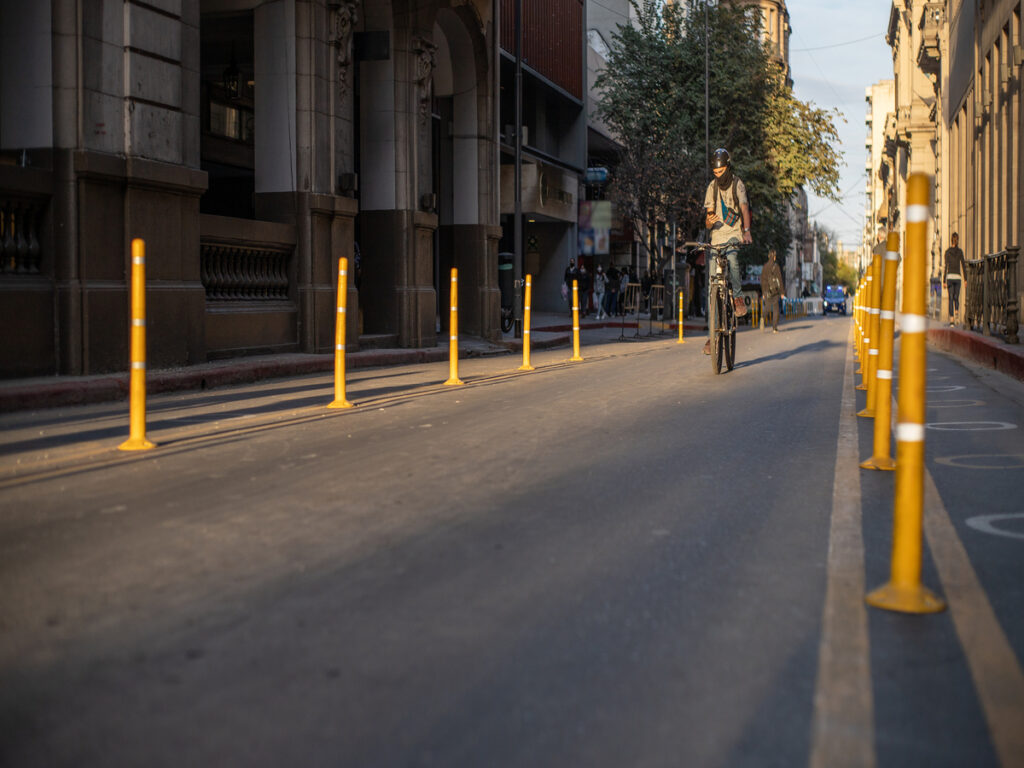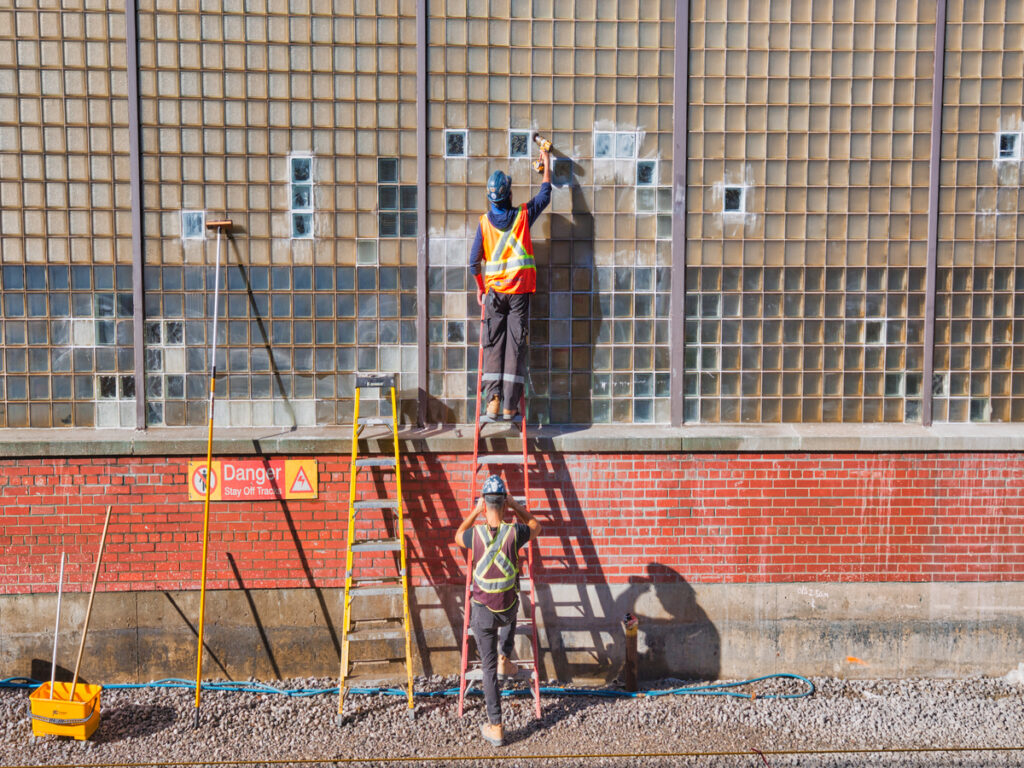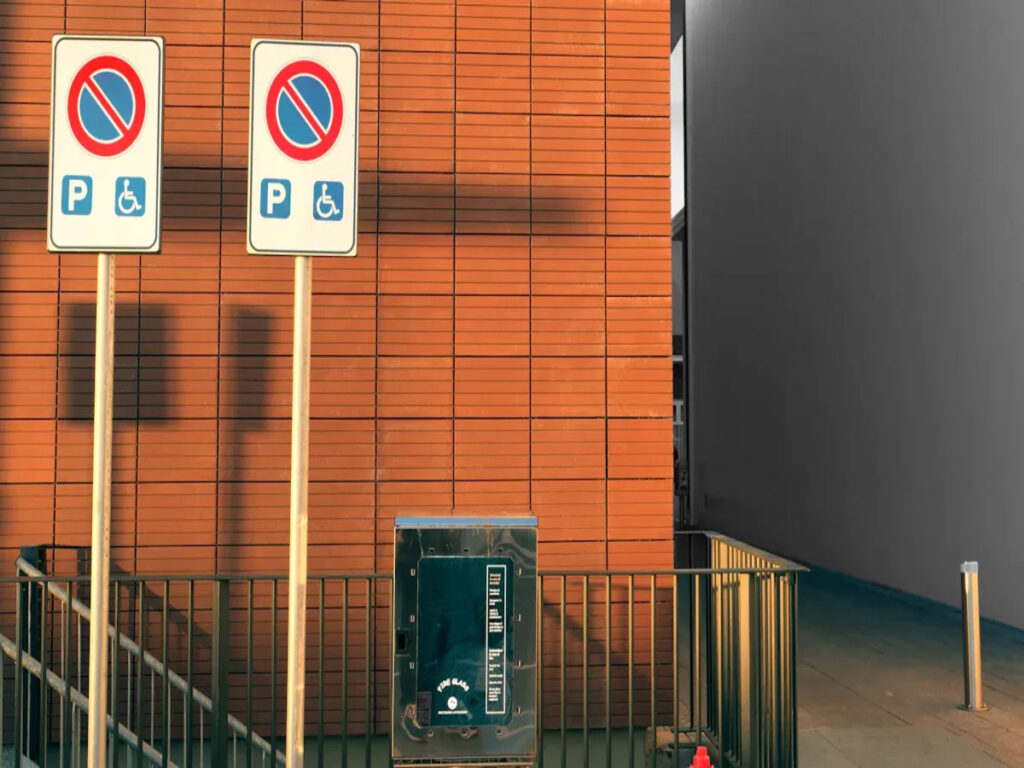
The 均一な交通制御装置のマニュアル (mutcd) sets the national standard for traffic control devices, including traffic control bollards. MUTCD compliance remains essential for public safety and liability protection. The Federal Highway Administration highlights that consistent standards make roads safer by guiding driver behavior.
OPTRAFFIC ensures that all traffic control bollards meet MUTCD standards, providing reliable solutions that enhance road safety and help guide driver behavior. By adhering to these established regulations, OPTRAFFIC contributes to safer, more organized traffic flow across public and private roadways.
キーテイクアウト
- Following MUTCD guidelines for bollard placement improves road safety and reduces accidents by up to 30%.
- Proper spacing and alignment of bollards ensure safe paths for pedestrians and prevent unauthorized vehicle access.
- Using reflective tape and bright colors on bollards increases visibility, especially at night and in bad weather.
- Regular inspections and maintenance keep bollards effective and help maintain compliance with safety standards.
- Professional installation and thorough site assessments ensure bollards meet all local and national requirements.
MUTCD and Traffic Control Bollards

What Is the MUTCD
The Manual on Uniform Traffic Control Devices, often called the MUTCD, sets the national standard for all traffic control devices in the United States. This document first appeared in 1935 after early traffic control manuals from the 1920s and 1930s. A joint committee, now known as the National Committee on Uniform Traffic Control Devices, developed the first edition. 以来 1971, the Federal Highway Administration has managed the MUTCD. The MUTCD covers everything from road signs to traffic control bollards. It provides clear rules for how to design, place, and use these devices on public roads. The MUTCD ensures that traffic control devices look and work the same way across the country.
MUTCD’s Role in Public Safety
The MUTCD plays a key role in keeping roads safe. It sets standards for traffic control devices that help drivers, cyclists, and pedestrians understand what to do. When cities and towns follow these rules, they reduce confusion and accidents. Traffic control bollards, 例えば, guide vehicles and protect people walking near busy streets. The MUTCD requires that all traffic control devices meet certain visibility and placement standards. This helps everyone move safely through intersections, crosswalks, and work zones.
ヒント: Consistent use of traffic control devices, including traffic bollards, helps drivers and pedestrians know what to expect in every city or state.
Why MUTCD Matters for Bollard Placement
Proper placement of traffic control bollards depends on following MUTCD guidelines. These rules ensure that bollards do not block walkways or create hazards. They also help prevent vehicles from entering areas meant for pedestrians. The MUTCD gives clear instructions for spacing, alignment, and visibility of traffic control devices. When agencies use these standards, they improve traffic flow and protect people. The legal authority of the MUTCD means that following its rules is not just best practice—it is required by law for public roads.
Key Guidelines for Bollard Placement
General MUTCD Requirements
The MUTCD provides a framework for the uniform design and placement of traffic control devices, including traffic control bollards. This manual guides agencies to use engineering studies or professional judgment when planning a traffic control plan. The MUTCD does not mandate installation but encourages context-driven decisions. Cities and organizations often adapt these guidelines to meet local needs. 例えば, New York City placed bollards near intersections and speed bumps to improve safety and manage traffic flow during major events. The University of Connecticut recommends spacing bollards eight feet apart to separate vehicles from pedestrians. The National Clearinghouse for Educational Facilities offers checklists for bollard placement in schools, focusing on boundaries and access control. These examples show how the MUTCD supports flexible, site-specific solutions that enhance safety and accessibility.
注記: Agencies should always review the latest MUTCD edition and consult local regulations before finalizing a traffic control plan.
Placement for Traffic and Pedestrian Safety
Proper placement of traffic control bollards protects both drivers and pedestrians. Urban development studies show that cities using modern bollard systems, such as London, have reduced vehicular attacks in pedestrian areas by 30%. This success highlights the importance of strategic placement in a traffic control plan. Planners must assess traffic and pedestrian density, ground conditions, and the specific risks at each site. Bollards should guide vehicles away from pedestrian zones without creating new hazards. In busy intersections and near schools, bollards help manage traffic streams and keep people safe. The Israel Traffic Research Institute found that placing bollards at highway exit areas reduced accidents by controlling vehicle movement. These findings support the need for careful site assessment and thoughtful placement in every traffic control plan.
Checklist for Safe Bollard Placement:
- Evaluate pedestrian and vehicle flow
- Identify high-risk zones (交差点, schools, exits)
- Ensure clear sightlines for all users
- Avoid blocking accessible routes
- Use removable bollards where emergency access is needed
Spacing Standards in Different Settings
Spacing standards for traffic control bollards vary by setting. The MUTCD and related case studies recommend different approaches for urban, suburban, and educational environments. The University of Connecticut Master Plan suggests eight-foot spacing to allow easy pedestrian movement while blocking unauthorized vehicles. In high-traffic urban areas, closer spacing may be necessary to prevent vehicles from entering restricted zones. Educational facilities use assessment checklists to balance safety with natural surveillance and site access. The following table summarizes typical spacing guidelines:
| Setting | Recommended Spacing | 目的 |
|---|---|---|
| Urban Intersections | 4–6 feet | Prevent vehicle entry, allow pedestrians |
| School Entrances | 6–8 feet | Support circulation, control access |
| Highway Exits | 6–10 feet | Guide traffic, reduce collisions |
| Public Plazas | 5–8 feet | Maintain open feel, ensure safety |
Planners should always adjust spacing based on the traffic control plan, site conditions, and user needs. Consistent application of these standards improves safety and supports effective traffic management.
Bollard Spacing and Alignment
Minimum Spacing Rules
Bollard spacing plays a critical role in maintaining safe and accessible pathways for both pedestrians and vehicles. The Americans with Disabilities Act (ADA) sets clear rules for minimum spacing. According to ADA guidelines, bollards must have at least 3 feet of clear distance between them. This spacing allows people using wheelchairs, strollers, or mobility aids to pass through without difficulty. At the same time, the spacing should not exceed 5 足. This upper limit helps prevent unauthorized vehicles from entering restricted areas. These rules ensure that bollards support both accessibility and effective traffic control.
Proper spacing also helps guide the flow of traffic. When bollards are too close together, they can create obstacles for pedestrians. If they are too far apart, vehicles may bypass them. Agencies must balance these needs to create safe, functional environments. Consistent application of these spacing rules improves safety for everyone who uses the area.
ヒント: Always measure the clear distance between bollards from the narrowest point to ensure compliance with ADA and traffic control standards.
Alignment for Effective Control
Alignment of bollards affects how well they manage traffic and protect pedestrians. Straight, evenly spaced lines of bollards create a visual barrier that drivers and pedestrians can easily understand. This alignment helps direct traffic away from restricted zones and toward designated paths. When planners align bollards with existing curbs, sidewalks, or road markings, they reinforce the intended flow of traffic.
Misaligned bollards can confuse drivers and pedestrians. Poor alignment may lead to unsafe crossings or encourage people to walk in the roadway. Agencies should use string lines or laser guides during installation to maintain straight, consistent alignment. In high-traffic areas, proper alignment becomes even more important. It helps prevent vehicles from making illegal turns or entering pedestrian-only spaces.
A well-aligned row of bollards also supports emergency access. Removable or collapsible bollards can be placed in line with permanent ones to allow authorized vehicles through when needed. This approach maintains security while supporting flexible traffic management.
Spacing Near Intersections and Crosswalks
Spacing bollards near intersections and crosswalks requires careful planning. Agencies must consider pedestrian density, land use, and traffic volume. Research shows that most pedestrian fatalities occur at unmarked midblock locations. Poorly spaced or absent crosswalks increase the risk of accidents. Agencies use specific guidelines to optimize safety:
- City of Portland recommends placing crosswalks 530 feet apart inside pedestrian districts and 800 feet apart outside these areas. Within 100 feet of transit stops, closer spacing improves safety.
- New York State Department of Transportation suggests 328 に 492 feet between crossings in central business districts. In urban or suburban areas, the maximum spacing can reach 1,312 足.
- Oregon Department of Transportation uses a range of 250 に 550 feet in mixed-use areas and up to 1,500 feet in suburban settings.
The quality of crosswalks and the willingness of pedestrians to use them also influence spacing decisions. Agencies review local traffic patterns, survey users, and collect data on how far people will walk to reach a safe crossing. These steps help determine the best locations for bollards and crosswalks.
The Manual on Uniform Traffic Control Devices (mutcd) provides guidance on pedestrian signal timing but does not set specific crosswalk spacing. Engineering studies fill this gap by analyzing local conditions and recommending optimal spacing. Agencies must use these studies to create safer environments and reduce pedestrian injuries.
Consistency for Safety and Accessibility
Consistency in bollard placement supports both safety and accessibility. When agencies use the same spacing and alignment standards throughout a traffic network, people know what to expect. This predictability helps drivers, cyclists, and pedestrians navigate safely. Consistent bollard placement also ensures that emergency responders can access restricted areas quickly when needed.
Agencies should develop clear guidelines for bollard installation and review them regularly. Training crews to follow these standards reduces errors and improves the effectiveness of traffic control measures. Regular inspections help identify misaligned or damaged bollards that could create hazards.
A table can help summarize the benefits of consistent bollard placement:
| 利点 | 説明 |
|---|---|
| Improved Safety | Reduces confusion and prevents accidents |
| Better Accessibility | Ensures clear paths for all users |
| Enhanced Traffic Flow | Guides vehicles and pedestrians efficiently |
| Easier Maintenance | Simplifies inspections and repairs |
注記: Consistent bollard placement is a key part of any effective traffic control plan. It supports long-term safety and accessibility for everyone.
Pedestrian and Vehicle Safety
Avoiding Pedestrian Obstruction
Bollards must never block pedestrian movement. Proper placement ensures that people can move freely along sidewalks and crosswalks. Agencies should always check that bollards do not create barriers for those using wheelchairs or strollers. Clear pathways support worker safety and road user safety by reducing the risk of trips and falls. When bollards have high visual contrast with their background, they help guide both pedestrians and vehicles. This approach prevents vehicles from entering spaces meant for people and keeps traffic organized.
Safe Vehicle and Pedestrian Interaction
Effective bollard placement improves how vehicles and pedestrians share space. Cities like San Francisco and Miami tested Leading Pedestrian Intervals (LPIs) and found that giving pedestrians a head start at intersections increased driver yielding and reduced conflicts. Other safety measures, such as No Turn On Red signs and Rectangular Rapid Flashing Beacons, also helped reduce traffic incidents. While these programs did not focus only on bollards, they show that clear signals and barriers make traffic safer for everyone. The MUTCD recommends placing bollards where curb heights are low to stop vehicles from riding up onto pedestrian areas. This design keeps traffic flowing smoothly and protects people walking near busy roads.
ヒント: Always use bollards with high visibility markings to alert drivers and improve worker safety in high-traffic zones.
Preventing Unauthorized Access
Strategic bollard placement stops unauthorized vehicles from entering restricted areas. Security teams use different types of bollards—fixed, removable, and retractable—to control traffic flow. They may arrange bollards in patterns like serpentine or chicane to slow vehicles and prevent direct access. During special events or heightened security, teams can change bollard positions to keep traffic unpredictable. This method protects both workers and the public by making it harder for unauthorized vehicles to reach sensitive zones. Bollards also help maintain clear lines of sight, which is important for worker safety and traffic management.
- Fixed bollards create permanent barriers.
- Removable bollards allow flexible access for emergency or service vehicles.
- Retractable bollards provide controlled entry and exit points.
Reducing Pedestrian Hazards
Traffic safety research shows that pedestrian refuges with illuminated traffic bollards reduce vehicle crashes, especially in areas away from intersections. When agencies place bollards near active pedestrian zones, overall crash rates drop. These safety gains are strongest when the purpose of the refuge is clear and supported by markings or channelization. Drivers recognize these spaces as off-limits, which helps protect people from traffic hazards. Properly marked and placed bollards reinforce safe behavior and support worker safety during construction or maintenance activities.
Consistent use of bollards in traffic control plans leads to safer streets and fewer accidents for all road users.
Traffic Control Bollards in Work Zone Traffic Control
Placement in Work Zones
Work zone traffic control requires careful planning to keep both workers and drivers safe. Agencies use bollards to guide vehicles and protect work crews. The MUTCD sets clear requirements for bollard use in these areas. Supervisors must follow spacing formulas based on the speed and volume of traffic. 例えば, in a lane closure, bollards should be placed close enough to prevent vehicles from entering the closed lane but far enough apart to allow emergency access if needed. Supervisors check the placement daily to ensure the traffic control plan works as intended. They also adjust bollards when traffic patterns change. This approach keeps work zone traffic control effective and safe.
注記: Always use high-visibility bollards in temporary traffic control zones to alert drivers and reduce confusion.
Temporary vs. Permanent Installations
Temporary traffic control zones often use portable bollards. These devices can be moved quickly as the work zone changes. Crews install them at the start of each shift and remove them when the lane closure ends. Permanent bollards, 一方で, stay in place for long-term projects or high-risk areas. The MUTCD recommends using temporary bollards for short-term work and permanent ones for ongoing needs. Both types must meet the same safety standards. The choice depends on the length of the project and the level of risk in the traffic control plan.
High-Traffic and Construction Areas
High-traffic areas and construction zones need extra attention in work zone traffic control. Traffic control plans for these locations often include more frequent bollard placement and stricter supervision. In a busy lane closure, crews may use mutcd-compliant lane closures with additional signage and barriers. The goal is to keep vehicles out of work areas and maintain smooth traffic flow. Agencies review each traffic control plan to make sure it fits the specific needs of the site. They also train workers to adjust bollards as traffic changes throughout the day. This flexible approach helps prevent accidents and keeps everyone safe in temporary traffic control zones.
Visibility and Reflective Standards
Reflective Tape Importance
Reflective tape plays a vital role in making bollards visible to both drivers and pedestrians. Studies from the National Highway Traffic Safety Administration show that reflective tape greatly improves visibility, especially at night or during bad weather. This improvement helps prevent roadway accidents and injuries. Bollard delineators use reflective strips and bright colors to guide traffic and protect people. These features make bollards stand out in high-traffic areas, reducing the risk of collisions. Regular safety inspections ensure that reflective tape remains clean and effective, as dirt or damage can lower visibility and increase danger.
MUTCD Visibility Guidelines
The MUTCD sets clear standards for the visibility of traffic control bollards. Bollards must be easy to see in all lighting conditions. Agencies use bright colors and reflective materials to meet these requirements. The proper height and shape of bollards help drivers spot them without blocking their view of the road. Materials like steel, concrete, and polyurethane offer both durability and high visibility. Inspections under both daytime and nighttime conditions help agencies maintain these standards and keep traffic moving safely.
Choosing Markings for Day and Night
Choosing the right markings for bollards ensures they remain visible at all times. The market for reflective materials continues to grow, showing a strong industry focus on safety. New technologies, such as microprismatic and glass bead coatings, boost retro-reflectivity for better night-time visibility. Some smart highways use photo-luminescent paints that glow after absorbing sunlight, making bollards easy to see even in the dark. Many countries require high-visibility markings by law, and manufacturers follow strict standards to guarantee effectiveness.
Enhancing Safety with Visibility
High visibility directly improves safety for everyone on the road. Reflective coatings and bright colors help drivers and pedestrians recognize bollards quickly, especially in busy traffic zones. Ongoing maintenance, including cleaning and replacing damaged tape, keeps bollards effective. When agencies follow these visibility standards, they reduce accidents and support safer traffic flow in all environments.
Common Mistakes and Compliance

Overcrowding Pathways
Many agencies make the mistake of placing too many safety bollards in a single area. Overcrowding pathways can block pedestrian movement and create hazards for people using wheelchairs or strollers. Compliance checklists for work zone traffic control projects often include device specifications and installation procedures to prevent this issue. Regular audits and visual inspections help teams identify when pathways become too narrow. Automated compliance software and GIS mapping tools can flag areas where bollard density exceeds recommended standards. These steps ensure that all users have safe and accessible routes.
Incorrect Spacing or Placement
Incorrect spacing or placement of safety bollards often leads to safety risks. When bollards are too close together, they can restrict access for emergency vehicles. If spaced too far apart, unauthorized vehicles may enter restricted zones. Work zone traffic control plans should always include clear spacing guidelines based on MUTCD standards. Structured audit frameworks and performance evaluations help teams spot and correct these errors. Key performance indicators, such as reduced compliance violations and improved safety metrics, show the value of proper placement.
Lack of Reflective Markings
Bollards without reflective markings become difficult to see, especially at night or during poor weather. This oversight increases the risk of accidents in work zone traffic control areas. Regular maintenance checks and documentation reviews ensure that reflective tape remains intact and visible. Technology tools can monitor the condition of markings in real time. Training programs remind crews to replace damaged or missing tape promptly.
Ensuring Ongoing Compliance
Ongoing compliance with MUTCD guidelines requires a proactive approach. Teams conduct regular visual inspections and review installation records for accuracy. Performance evaluations analyze traffic patterns and accident reports to confirm that devices meet safety goals. Communities that follow work zone traffic control standards closely see significant reductions in traffic-related injuries. Compliance checklists, audit frameworks, and continuous training support systematic adherence. Proactive identification and correction of non-compliance issues help maintain safety and regulatory alignment.
ヒント: Use a structured checklist for every work zone traffic control project to minimize errors and ensure ongoing compliance.
| Compliance Step | 目的 |
|---|---|
| Visual Inspections | Identify wear, ダメージ, or obstructions |
| Documentation Reviews | Verify records and certificates |
| Performance Evaluations | Assess safety and traffic flow |
| Training Programs | Keep teams updated on standards |
Ensuring Proper Installation
Site Assessment Steps
Proper installation of bollards begins with a thorough site assessment. Teams walk the area to identify hazards, measure pathways, and check for underground utilities. They look for existing signs, curbs, and crosswalks that may affect placement. Teams use measuring tools to ensure enough space for pedestrians and vehicles. They also review the flow of people and cars during different times of day. This process helps teams create traffic control plans that fit the unique needs of each location.
ヒント: Teams should take photos and notes during the assessment. These records help with planning and future maintenance.
Verifying Local and National Standards
Every installation must meet both local and national standards. Teams review the Manual on Uniform Traffic Control Devices and local building codes. They check for rules about spacing, height, および可視性. Some cities have extra requirements for historic districts or school zones. Teams compare these rules with their traffic control plans to avoid mistakes. They also contact local authorities if they have questions about special permits or inspections.
A simple checklist can help teams stay organized:
- Review MUTCD guidelines
- Check city and state codes
- Confirm ADA accessibility
- Obtain required permits
Professional Installation Benefits
Professional installers bring experience and specialized tools to each project. They know how to anchor bollards securely and align them with traffic control plans. Professionals use equipment like core drills and laser levels for precise placement. Their work reduces the risk of errors that could cause accidents or block access. Teams also benefit from warranties and ongoing support when they hire experts. This approach saves time and ensures long-term safety for everyone who uses the area.
注記: Professional installation helps agencies meet all safety and compliance standards with confidence.
Strict adherence to MUTCD guidelines for bollard placement leads to safer streets and fewer accidents. Studies from the Federal Highway Administration show up to a 30% drop in traffic injuries when communities follow these standards. Regular training, audits, and expert consultation help maintain compliance and reduce legal risks. 最良の結果を得るために, teams should review official MUTCD documents, seek advice from traffic engineers, and stay updated on new safety practices. 🚦
よくある質問
What is the minimum spacing required between bollards for ADA compliance?
The ADA requires at least 3 feet of clear space between bollards. This spacing allows wheelchairs, strollers, and mobility aids to pass through safely. Agencies should always measure the narrowest point to ensure compliance.
Do all bollards need reflective tape to meet MUTCD standards?
はい. The MUTCD requires bollards to have reflective tape or markings. These features improve visibility for drivers and pedestrians, 特に夜または悪天候の間.
How often should agencies inspect bollard installations?
Agencies should inspect bollards regularly. Most experts recommend monthly visual checks and immediate inspections after construction or major events. Routine maintenance ensures continued compliance and safety.
Can temporary bollards be used in permanent traffic control plans?
Temporary bollards work best for short-term projects or changing work zones. Permanent installations require fixed or anchored bollards that meet all MUTCD and local standards for long-term safety.
Who should install traffic control bollards?
Professional installers have the training and tools needed for safe, compliant placement. They follow MUTCD guidelines and local codes, reducing the risk of errors and improving long-term safety.


















